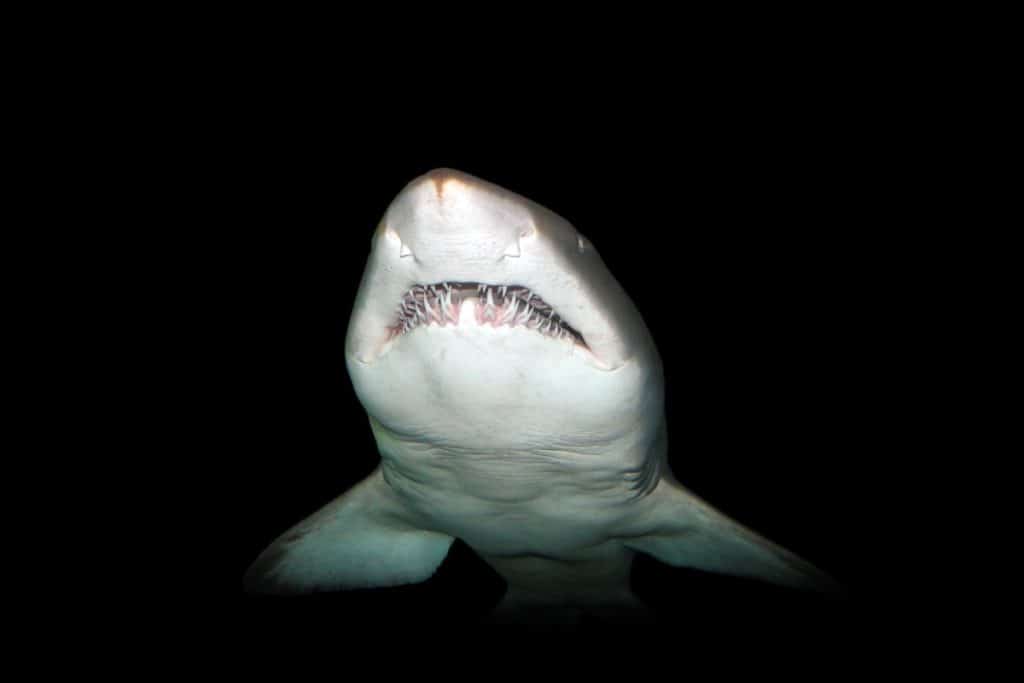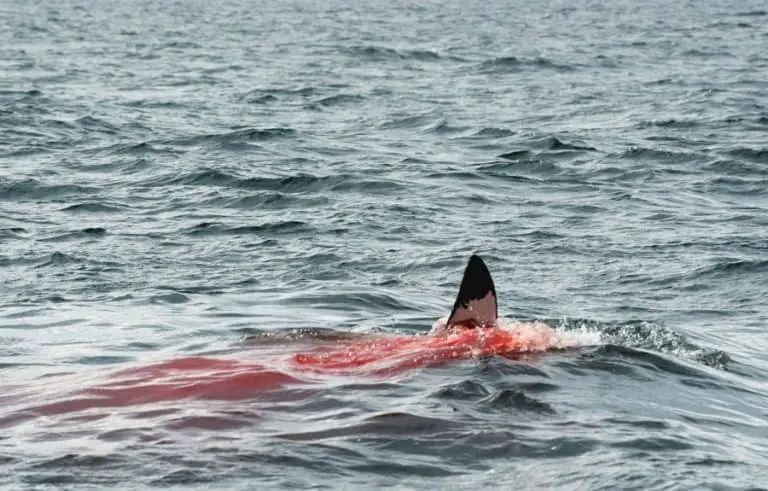Are Sharks more Active at Night? Get the Answer!
Whether sharks are more active at night is popular, but the answer is not straightforward. Sharks have been seen hunting at night, and during the day, so it’s hard to say that they’re exclusively nocturnal or diurnal creatures.
In fact, some species of shark have been known to hunt in different ways depending on what time of day it is.
One thing that seems consistent about most shark species is that they’re most active in the hours right before and after dusk.
But this rule does not always apply to all species.
The Great White is an excellent example of a shark known to hunt just about any time of day or night. They have even been seen hunting in broad daylight, but most activity seems to happen at dawn and dusk.
The truth behind what day sharks are most active is that it varies between species, but most are more active at dusk and dawn.
Are Sharks Nocturnal?

Sharks have been known to attack humans. Even though there is no objective evidence that they seek out human prey, many people avoid swimming in the ocean at night.
For this reason, it may surprise you to learn that sharks can actually be active during both day and night hours.
It turns out that some species of sharks hunt for food during both daytime and nighttime hours. Still, other shark species are primarily nocturnal hunters!
These include requiem sharks like great white sharks who primarily use their sense of smell to find prey instead of sight like most other types of marine life.
What Types of Sharks are more active at night.

Many types of sharks are primarily nocturnal hunters, including:
- The Great White Shark
- Tiger Shark
- Hammerhead Shark
- Thresher Shark
- Ground Shark
- Nurse Shark
- Bull Shark
- White Tip Reef Shark
- Blacktip Reef Sharks
- Whale Sharks (Day and Night)
- And Many More!
It is also interesting to note that nocturnal sharks are more likely found in shallow waters where they can easily maneuver while maneuvering through the darkness.
During the day, sharks can be found to remain in calm or temperate waters because it is easier for them to see and hunt their prey. Sharks that tend to rest during the day often prefer these waters because they are more comfortable and safe for sleeping.
Requiem Sharks:
Requiem Sharks are shark types that spend their time at the bottom of seas and oceans, often near reefs or other underwater structures.
They typically sleep by burying themselves in sand or loose gravel, hiding them from predators.
The name “requiem” comes from their ability to produce sounds that resemble human moaning when under stress or threatened with death.
The Great White Shark:
The Great White Shark is the world’s largest predatory fish and one of the most feared wild animals on earth.
In fact, no other creature, not even dinosaurs, has been as widely studied by scientists or captured so vividly in popular culture.
Great White sharks are nocturnal hunters and can be found in almost all coastal waters. They hunt fish, seals, sea lions, dolphins, and whales.
Tiger Shark:
The tiger shark is a large species of requiem shark and the only member of the genus Galeocerdo.
It is found in tropical and subtropical waters worldwide and is especially common around the central Pacific islands.
Tiger sharks are large and stout, with females being larger than males.
The tiger shark can be distinguished from other sharks by its broad, blunt snout, narrow eyes, two dorsal fins of nearly equal size, lack of a precaudal pit, and gray coloration with a white or pale underside.
Bull Shark:
The Bull Shark is a giant shark with a short, rounded snout and broad, blunt nose. The eyes are circular and without nictating membranes.
It has 2 dorsal fins and no inner dorsal ridge. One of the three most common sharks inhabiting river mouths and estuaries. The other two are the Tiger Shark and the Blacktip Shark.
Bull sharks can be found worldwide in coastal areas of warm oceans, in rivers and lakes, and occasionally salt/freshwater.
Thresher Sharks:
Thresher sharks are a family (Alopiidae) of sharks characterized by their very long tails, which may comprise up to half the shark’s total length.
The common Thresher Shark is found worldwide in tropical and temperate waters.
The threshers are reported to school when feeding, but not in the breeding season. They are active, strong swimmers and are often seen around coral reefs. Threshers feed on fishes, rays, squid, and crabs.
They hunt during the Day or Night, depending upon what they’re hunting for at the time.
Hammerhead Sharks:
Hammerhead Sharks are nocturnal animals, which means they feed at night and sleep during the day.
While hammerheads do not exhibit any circadian rhythms, their life cycle does not depend on a 24-hour day/night cycle.
The sharks will become active when there is enough light to see prey.
The only other instance that a shark becomes more active at night is when it needs to find warmer water in the winter months due to climate change or for too long without food.
Hammerheads have been known to migrate hundreds of miles from one ocean basin to another and across continents in search of better feeding grounds or warmer waters for reproduction purposes and hunting prey.
Whale Shark :
Whale Sharks are active during both night and day. Whale sharks are found in tropical waters of the Indian Ocean, Southeast Asia, Western Australia/Oceania, Eastern Atlantic region including Gulf of Mexico, Caribbean Sea region to Brazil coast, West Africa including Mauritania and Cape Verde.
Until recently, it was believed that whale sharks were once nocturnal animals.
The reason why was because they can jump out of the water when they breach the surface, which is only something done during nighttime by most marine animals.
The light receptors in the rear of whale sharks’ eyes are to blame for their present reputation for being active both day and night. This allows them to detect creatures even when they’re swimming in murky water, which is quite remarkable.
Blue Sharks:
The big-eye blacktip shark may be found in tropical and warm temperate seas worldwide. However, they prefer colder water to the tropics.
Blue sharks migrate over large distances during the year following food sources.
Blue sharks mostly hunt for food at night. They migrate to shallow waters at night, so they can use their sense of smell to find prey instead of sight, which they can’t do in the dark when there’s not enough light around them.
FAQ
When Do Sharks Sleep
Sharks are constantly on the move, but do they sleep?
The answer is that it varies. Sharks settle into napping mode for only short periods at a time.
The vast majority of the time, they are on the move, searching for food.
Even when they appear motionless on the surface or in shallows where their dorsal fins sticking out of the water, they’re likely just catnapping, conserving their energy.
Sharks need to keep swimming, or else they will sink and drown.
What Time Of Day Are Sharks Most Active
Sharks are most active in the dusk and dawn hours. During these times, they will become most active and most aggressive.
Do Sharks Come Closer To Shore At Night
However, they don’t come in as close during nighttime hours. They still venture closer to shore but not as much as they do when the sun is down.
Why Are There More Shark Attacks In The Summer
Many people go in the water, and they are most active when the sun is out.
Do Sharks Attack More At Night
Sharks are hunters, not attackers. They attack when they are hungry or mistake humans for their natural prey (sharks sometimes attack humans misunderstanding them for sea lions).
Sometimes sharks may be curious about people, but that doesn’t necessarily mean they are trying to eat you. Sharks rarely bite or catch humans by accident.
Research shows sharks attack more during the day because most humans go into the water.
However, attacks at night are usually fatal because there isn’t as much light for divers to see a shark coming.
Certain activities also attract sharks, but these activities apply to both day and night, including surfing, scuba diving, spearfishing, and surfing near a seal colony.
What Time Of Day Are Sharks Most Aggressive
Between 8:00 a.m and 6:00 p.m are when sharks are most aggressive due to the sun’s heat.
Do Sharks Come Shallow At Night
There is a popular myth that sharks come to shallow waters and beaches at night and attack people. This has been proven NOT TRUE.
Sharks may swim near the shoreline, but there is no evidence they try to enter the surf zone or shallows any more than during daytime hours.






